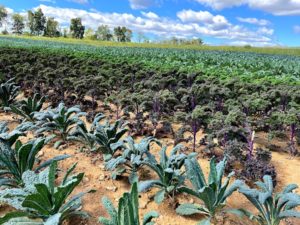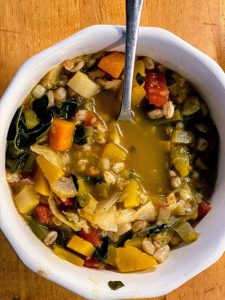Stretch Your Meal Budget
Stretch Your Meal Budget
Rising food prices have everyone thinking of creative ways to stretch their meal budget. One of the easiest ways to start saving on your grocery bill is by purchasing locally and in-season. Foods that are grown locally are fresher and retain more nutrients, they also taste better, as they are picked and consumed nearby the… Read More »

Community Supported Agriculture (CSA) is a way of connecting families to farmers and increasing local food accessibility. Today’s CSA model consists of a weekly box of farm fresh produce delivered to your home or picked-up from your local farm. The box contains fruits and vegetables that are in season on the farm which is the eating-in-season lifestyle. Eating in season provides your body with all the nutrients along with vitamins and minerals it needs at that period, as mother nature intended. Eating seasonally not only creates healthy meals, but it also helps keep the environment healthy by reducing the need for transporting goods from farther away places and climates. We on the farm have always believed in the practice of eating in season for its numerous benefits including; a healthier lifestyle, and reducing your carbon footprint, and because we’re farmers and live close to, and are in touch with the land.
Eating whole foods in harmony with the seasons is better for you. Processed foods are less economical as you are paying for fillers and
Essentials are items that you should have on hand in your pantry and replenished as needed. These basic items are the building blocks of homemade meals. Keeping a well-stocked pantry with staples means that you always have the basics to prepare virtually anything and reduce the trips to the store, saving you money in the long run. Your basic pantry should be stocked with dried beans, herbs & spices, vinegar & oils, rice, and a few more staples. Read more tips on how to stock the perfect pantry on our website by clicking this link. Checking sales and stocking up on items when on-sale is a great way to be cost-effective. Did you know that we offer a weekly sale item in our farm store? You can check out our weekly digital sales circular on our website here.
Eating at home and cooking your meals is the best for your health and monthly food budget. Cooking your meals allows you to monitor ingredients and portion sizes and make healthier choices. Meal planning is a great tool to help maximize your weekly groceries by getting as many meals as possible. Repurposing leftovers is another great way to save money. A great way to use up leftovers is to keep the vegetables, greens, potatoes, meats, and all the bits leftover from dinner and create an egg dish or a rice or quinoa bowl, a wrap, or even a salad for breakfast, brunch, or lunch. It not only helps reduce waste, but it also makes for a flavorful reinvented meal. Another tip you may want to try is to save your potato, leek tops, or root vegetable peels, and turn them into chips easily in your air fryer. Roast chard, spinach, or kale stems to soften them and turn them into something delicious rather than discarding them. Save nearly expired veggies and fruits before they turn bad by freezing them. You can then use them in various dishes to add flavor, fiber and vitamins, and minerals. Add the frozen fruit to a smoothie in the morning, toss cooked veggies into soups or sauces, or add frozen chopped veggies to omelets or casseroles to amp up nutrition and flavor!
Eating less meat & reducing portion sizes is another way to stretch your food budget and eat healthier. Integrating more beans and legumes into your diet is easy by swapping out meat for these protein alternatives. A fun way to start going meatless is to participate in meatless Monday or choose any day of the week that works for you. It’s a reminder that reducing meat is not only good for you, but it’s also good for the planet and your wallet. When using meat in recipes, plan to utilize different cooking techniques such as braising which low and slow cooking process that allows you to use lesser (and therefore less expensive) cuts of meat to create a flavorful meal.

Planting a small garden at home allows you to have freshly harvested items for your dinner table. An easy starter garden can consist of herbs, lettuce, and tomatoes. The rewards at the end of the harvest season make it so worthwhile. Several herbs are annuals and while others are perennials, meaning they come back year after year. You can learn more about herbs on our website by clicking here. You will want to know how to preserve your bounty to enjoy throughout the season. Find tips for savoring spring produce on our website by clicking here.
When in doubt, make more soup! Soup is an excellent way to reinvent leftovers, use about to expire produce, as well as incorporate more vegetables into your diet. Besides being an economical meal, there are so many different kinds of soup that you can enjoy a new variety with every meal. Don’t have time to make homemade soup from scratch? Stop into our farm store and pick up our soup of the week made fresh with love.
Best wishes from our Farm Kitchen to yours! XO







